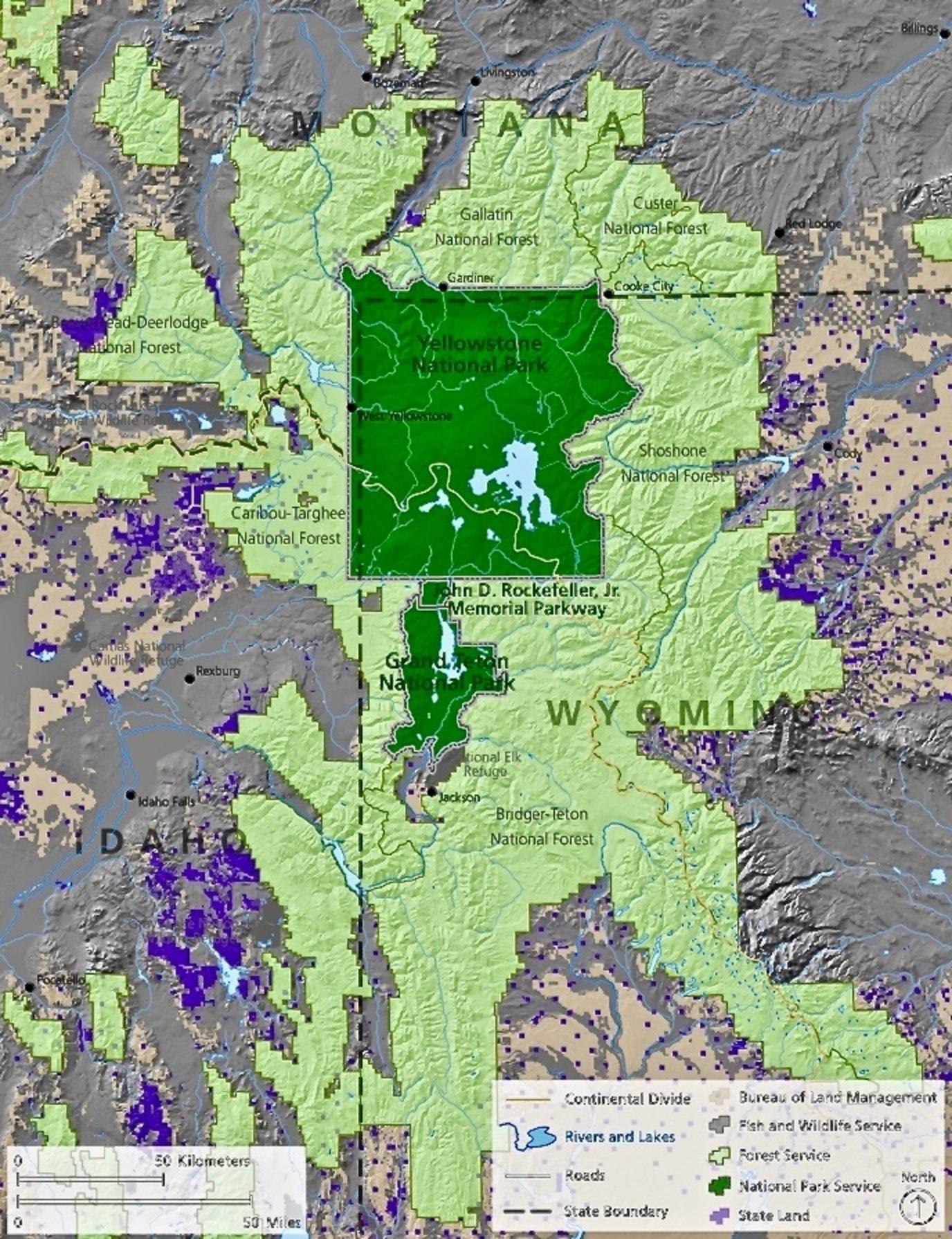The Greater Yellowstone Ecosystem is one of the most ecologically-intact bioregions in the temperature zones of the world. At more than 22 million acres, most of its size is comprised of federal public lands (owned by all U.S. citizens) yet four or five million acres of private land are crucial to the survival of wildlife, clean rivers, open space, and rural culture. Everywhere else in the Lower 48, human population pressure, land converted to development, and fragmented ownership has resulted in the "wild" characteristics found in Greater Yellowstone being lost. Map courtesy National Park Service.

